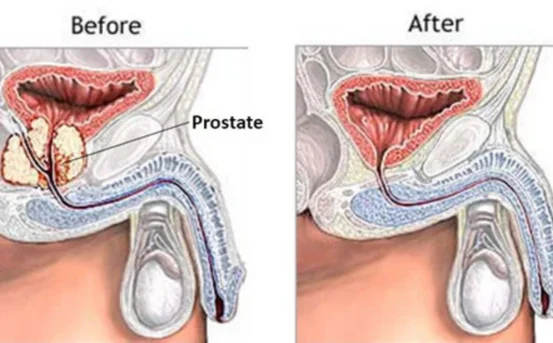Effective discectomy surgery emerges as an effective solution when back pain is a common issue that affects millions of people worldwide, and in many cases, it’s caused by a herniated disc pressing on a nerve. When conservative treatments such as physiotherapy, medications, and lifestyle changes fail to offer relief. This minimally invasive spinal surgery is designed to relieve pressure on the spinal nerves, significantly reducing pain and improving mobility.
Chronic back pain and nerve-related leg pain are among the leading causes of disability and reduced quality of life for millions of people across the globe. Whether it’s a constant ache in your lower back pain, a sharp pain radiating down your leg, or a tingling sensation that disrupts your daily routine, the root cause often lies in a herniated or damaged spinal disc compressing a nearby nerve.
What is Discectomy Surgery?
Discectomy is a surgical procedure to remove a portion of a herniated or damaged intervertebral disc that is compressing a spinal nerve root or the spinal cord. The goal is to relieve symptoms such as :-
-
Persistent lower back or neck pain
-
Numbness or tingling in limbs
-
Sciatica (radiating leg pain)
-
Weakness in the legs or arms
There are different types of discectomy surgeries based on the location and technique used :-
-
Lumbar discectomy :- Performed in the lower back
-
Cervical discectomy :- Performed in the neck
-
Microdiscectomy :- A minimally invasive technique using a microscope
-
Endoscopic discectomy :- Uses a small camera through tiny incisions
When is Discectomy Recommended?
Discectomy surgery is not the first line of treatment for back or leg pain. Doctors usually recommend it when :-
-
Conservative therapies have failed after 6-8 weeks
-
Imaging tests (MRI or CT scans) confirm a herniated disc
-
You experience significant muscle weakness or loss of bowel/bladder control
-
Pain is severe and limiting daily function
Conditions that may require discectomy include :-
-
Herniated disc (slipped disc)
-
Degenerative disc disease
-
Sciatica caused by nerve compression
-
Spinal stenosis (in some cases, combined with other procedures)
Preparing for Effective Discectomy Surgery
Once your spine specialist recommends discectomy, several steps are taken to prepare :-
-
Imaging Tests :- MRI or CT scan to locate the affected disc
-
Physical Examination :- Neurological assessment to test strength, reflexes, and sensation
-
Medical Clearance :- Preoperative tests like blood work, ECG, and X-rays
-
Medication Review :- Certain blood thinners or anti-inflammatory drugs may be stopped
-
Fasting Instructions :- Usually, no food or drink 8 hours before surgery
How is Discectomy Surgery Performed?
Discectomy is usually performed under general anesthesia and can take between 1 to 2 hours. The steps include :-
-
Positioning :- The patient lies face down on the operating table (for lumbar cases)
-
Incision :- A small incision is made over the affected vertebra
-
Accessing the Spine :- Muscles and tissues are gently moved aside
-
Disc Removal :- The herniated or damaged disc material is removed to relieve pressure
-
Closure :- The incision is closed with sutures or surgical glue
In minimally invasive techniques like microdiscectomy or endoscopic discectomy, the surgeon uses a microscope or camera through a small tube, which results in less tissue damage and quicker recovery.
Recovery After Discectomy Surgery
Most patients go home the same day or within 24 hours after the surgery, especially if it’s performed using a minimally invasive method. Here’s what to expect :-
Hospital Stay :-
-
Monitoring for a few hours post-surgery
-
Walking is encouraged the same day
-
Pain management with medications
At Home :-
-
Rest for the first few days
-
Gradual increase in activity
-
Avoid heavy lifting or bending for 4-6 weeks
-
Use a lumbar support belt if advised
Return to Work :-
-
Desk jobs: 2–4 weeks
-
Physically demanding jobs: 6–8 weeks
Physical Therapy :-
-
Exercises begin within a few weeks post-surgery
-
Focus on strengthening the core and improving flexibility
-
Reduces the risk of future disc issues
Risks and Complications of Discectomy
Discectomy is generally a safe procedure, but as with any surgery, there are some risks :-
-
Infection at the surgical site
-
Bleeding or blood clots
-
Nerve damage (rare)
-
Spinal fluid leakage
-
Re-herniation of the disc
Choosing a skilled spine surgeon and following postoperative care instructions can significantly reduce these risks.
Long-Term Benefits of Discectomy
Many patients report significant improvement in symptoms following discectomy surgery. Some of the major benefits include :-
-
Pain Relief :- Immediate and long-lasting relief from leg or back pain
-
Improved Mobility :- Easier movement and better posture
-
Enhanced Quality of Life :- Resumption of daily activities and work
-
Quick Recovery :- Especially with microdiscectomy or endoscopic techniques
-
Minimally Invasive Options :- Less scarring, less pain, and fewer complications
Success rates for discectomy are high, especially when performed on patients who are ideal candidates. Studies show over 85% of patients experience significant symptom relief.
Tips for Successful Recovery After Discectomy
Here are some practical tips to ensure a smooth recovery :-
-
Follow your doctor’s advice strictly
-
Stay active within your limits short walks help circulation and healing
-
Attend physical therapy sessions regularly
-
Avoid smoking and alcohol, which can delay healing
-
Watch your posture while sitting, standing, or lifting
When to See a Doctor After Discectomy
Contact your surgeon immediately if you notice :-
-
High fever or chills
-
Redness, swelling, or discharge from the incision site
-
Severe pain not relieved by medication
-
Numbness or weakness in legs
-
Loss of bowel or bladder control
Early intervention can prevent complications and ensure full recovery.
Conclusion
Discectomy surgery can be a life-changing solution for individuals suffering from chronic back or leg pain due to a herniated disc. With modern, minimally invasive techniques, the procedure is safer, faster, and more effective than ever. If you’ve tried conservative treatments and still suffer from nerve-related pain, talk to a qualified spine surgeon to explore if discectomy is the right option for you.






















